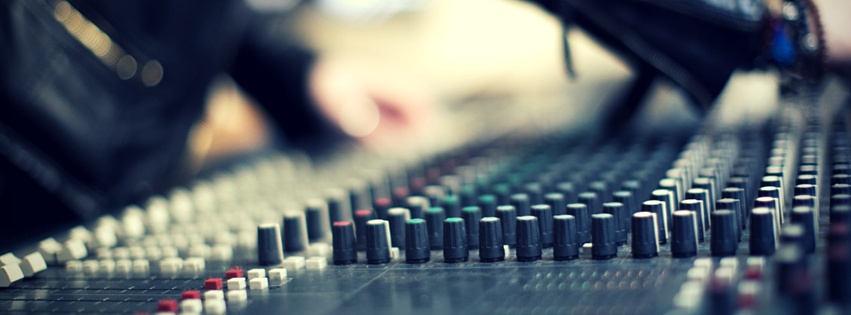![]()
 Since its humble beginnings in the mid 19th century, sound recording techniques have been constantly evolving in response to wider changes in technology. If you’re searching for sound engineering courses, there’s a good chance you’re interested in the more technical aspects of sound recording. In this article we give a potted history of the rich (and often bizarre) history of sound recording technologies, as well as an in-depth look at the state of the industry right now.
Since its humble beginnings in the mid 19th century, sound recording techniques have been constantly evolving in response to wider changes in technology. If you’re searching for sound engineering courses, there’s a good chance you’re interested in the more technical aspects of sound recording. In this article we give a potted history of the rich (and often bizarre) history of sound recording technologies, as well as an in-depth look at the state of the industry right now.
Where it all began
A lot of accounts will tell you that Thomas Edison’s phonograph, which he introduced to the world in 1876, was the first real example of a recording device. However, Edison actually built upon the work of a number of inventors before him, particularly Leon Scott, whose Phonoautograph took the world by storm way back in 1856. This elaborate contraption directed sound through a horn with a flexible membrane at the narrow end, much like an eardrum. The vibrations from any incoming sound would then be relaid to a lever and stylus, which would then carve out a line on a rotating cylinder to record it. Sadly, few of these devices still exist today, but the influence they had on Edison and the subsequent development of sound recording were massive. (A special mention goes to Alexander Graham Bell’s phonoautograph, which actually featured a real human ear harvested from a cadaver, and definitely stands as one of the weirder footnotes in the history of sound engineering).
Tape recording: an age of experimentation
None of these were really commercially viable however – particularly Bell’s invention. It was only with the advent of magnetic recording – and later tape recording devices – that the modern studio as we’d recognise it today began to take shape. Early advances in tape recorder technology took place mostly in Germany in the 1930s and 40s. By the time Berlin fell in the Spring of 1945, AEG’s tape-based magnetophon could lay claim to being the best quality studio recorder in the world. After the war, American companies copied and improved upon German designs, and what followed was a period of experimentation and innovation that radically altered the process of recording and manipulating sound. The main benefit of tape recording over earlier technologies was in multi-track recording. This allowed for stereo sound in consumer recordings, as well as facilitating greater experimentation in the studio. It was now possible to combine multiple sound sources into one channel, as well as compile, re-arrange and edit individual sounds in a single recording. Over time, engineers managed to reduce the size of tape recorder heads, which allowed for more heads to be added to a single recorder. By the 1960s, up to 24 tracks could be recorded on one extremely wide tape, allowing for highly complex arrangements to be executed. This period saw the release of a huge number of seminal albums, such as the Beach Boys’ Pet Sounds and the later releases of the Beatles, which wouldn’t have been possible without multi-track recording techniques.
The rise of digital
The story of audio engineering since then has mostly been that of the rise of digital. The introduction of commercially available DAWs (Digital Audio Workstations) in the mid 1970s was a major impetus for this. A DAW is a piece of software specialised for synthesising, editing and processing digital audio. The most widely used on the market right now are Avid Pro Tools and Apple Logic. DAWs’ main advantage is their ability to freely manipulate a piece of audio, applying sound effects, culling certain frequencies and splicing different samples together with ease. With the addition of often freely available plugins DAWs can also synthesise the sound of a huge array of instruments and analogue equipment, making them an invaluable tool for audio engineers working in the industry right now.
Check out our sound engineering courses
Audio recording technologies are always evolving, and it can be quite difficult to get to grips with the industry and its standard tool set. We’ve put together our sound engineering courses with a view to equipping our students with the knowledge and technical skills required by the industry right now. We offer guidance in advanced mixing techniques, music technology and audio production for TV and film, And we’re also the only institution in Ireland that offers certification in Avid Pro Tools, an industry-recognised qualification. If you want to learn more about our sound engineering courses, touch base now or register for one of our upcoming open days (Dublin here, Galway here) engineering courses can do for you.
[openday]